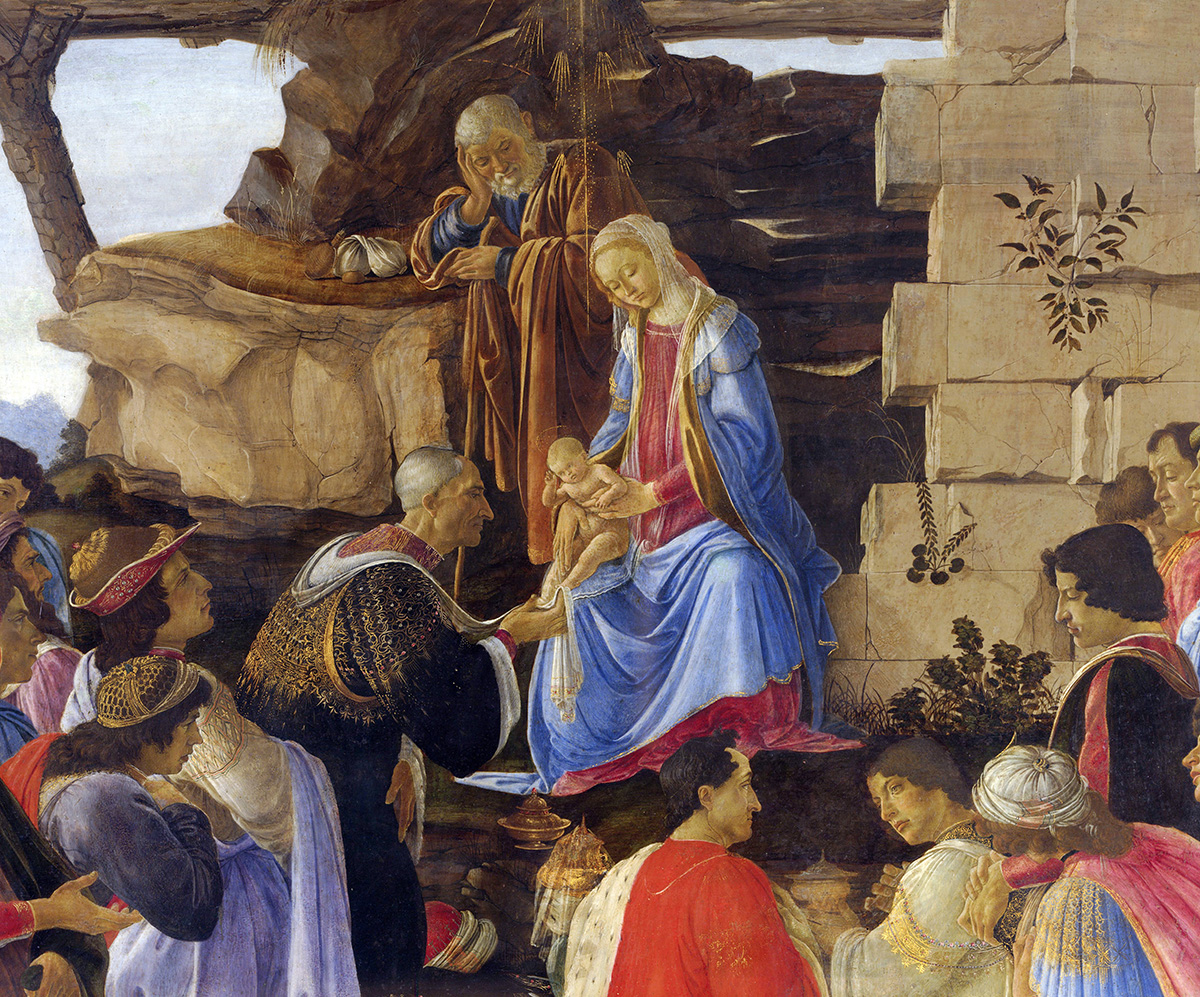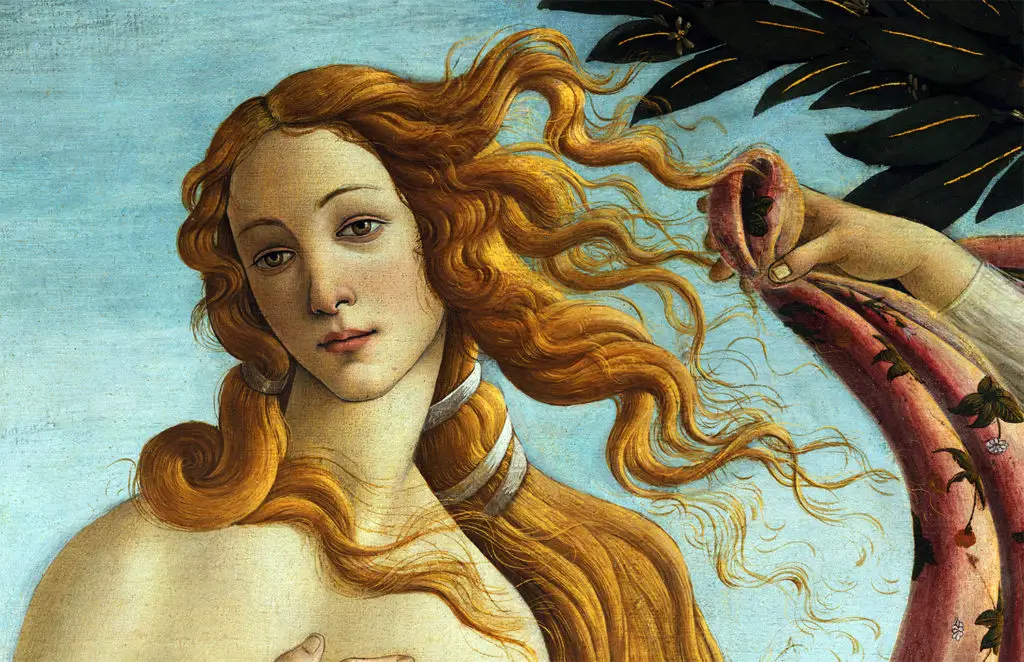Article 2 regarding Season 2 of the Netflix series “Medici: Masters of Florence”
Now, we should explain the Medici character of this period, Lorenzo’s times. Piero the Medici was Cosimo’s son, and the next leader of the Medici family. As we can see in this Botticelli’s picture below, the hierarchical triangle shows that Cosimo is the leader of the family: he is on his knees in front of the Virgin. His son Piero (bottom, dressed in red) and Giovanni are following. Lorenzo il Magnifico is on the left, just after Cosimo.

When Piero the Gouty died, in 1469, only five years after Cosimo, Lorenzo took power, and he had Giuliano on his side. (In this detail of Benozzo Gozzoli’s frescoes in the Magi Chapel below, we can see a young Lorenzo at the center of the picture).

The Medici brothers fall in love
 But how is Botticelli connected to the Medici brothers? Lorenzo and his brother Giuliano enjoyed life, and especially beautiful women. Lorenzo was in love with Lucrezia Donati, and even when he was married to Clarice Orsini, he kept on writing poems dealing with Lucrezia. Giuliano was in love with Simonetta Cattaneo (on the left), a girl so beautiful that she was called “La Sans Par”, that is “peerless”, as her beauty was exceptional. Jousts were organized, in order to show the Florentine people the value and courage of the young Medici. The first joust was held in 1469, and Lorenzo was the winner. The victory was devoted to Lorenzo’s lover, Lucrezia Donati. Later, in 1475, his younger brother Giuliano took part to another joust in Piazza Santa Croce, and he also was the winner. Poliziano, a famous poet and a friend of Lorenzo, wrote his masterpiece “Le Stanze”, to celebrate Giuliano’s victory. The beautiful poem was not completed, as Giuliano was killed in the Pazzi Conspiracy in 1478.
But how is Botticelli connected to the Medici brothers? Lorenzo and his brother Giuliano enjoyed life, and especially beautiful women. Lorenzo was in love with Lucrezia Donati, and even when he was married to Clarice Orsini, he kept on writing poems dealing with Lucrezia. Giuliano was in love with Simonetta Cattaneo (on the left), a girl so beautiful that she was called “La Sans Par”, that is “peerless”, as her beauty was exceptional. Jousts were organized, in order to show the Florentine people the value and courage of the young Medici. The first joust was held in 1469, and Lorenzo was the winner. The victory was devoted to Lorenzo’s lover, Lucrezia Donati. Later, in 1475, his younger brother Giuliano took part to another joust in Piazza Santa Croce, and he also was the winner. Poliziano, a famous poet and a friend of Lorenzo, wrote his masterpiece “Le Stanze”, to celebrate Giuliano’s victory. The beautiful poem was not completed, as Giuliano was killed in the Pazzi Conspiracy in 1478.
Le Temps revient: Botticelli and Simonetta
Lorenzo’s motto was “Le Temps Revient”, meaning the the times were changing for the better. Simonetta Cattaneo, Giuliano’s lover, was a favorite Botticelli’s model, and he portrayed her timeless beauty in many paintings, including the famous “Birth of Venus” (detail, bottom). When Simonetta died in 1476, when she was only 23, Florence was shocked. It seems that Giuliano was found crying in front of Simonetta’s house. Lorenzo the Magnificent devoted a poem to her, in which he compared Simonetta to a shining star, brighter than the other stars in the sky.


Written by Sergio Porrini, Next-Generation Virtual Reality Expert & ItaliaLiving.com Contributor.
© 2017 Virtualiter. All rights reserved